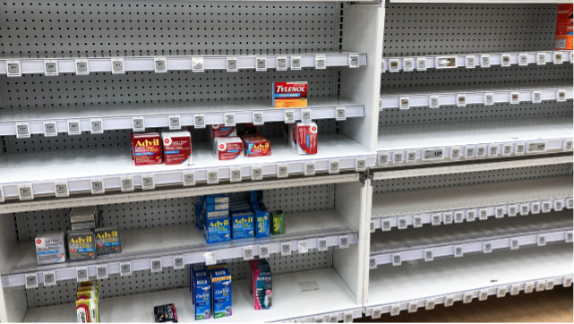The Impact of US Drug Shortages on the Supply Chain
November 23, 2023
Source: drugdu
 467
467
Nicholas Saraceno
IQVIA report explores why these shortages are increasing, and how they can be mitigated.

Image Credit: Adobe Stock Images/Julia
Drug shortages are an issue that continue to grow in news coverage, due to their impact on patient care and public health. Data suggests that the amount of drug shortages in the US is increasing as more shortages continue to be reported than resolved. As a report by IQVIA titled Drug Shortages in the US 2023: A Closer Look at Volume and Price Dynamics1suggests, stakeholders have suggested various tactics to mitigate shortages, including prioritizing essential medicines, stockpiling, and making changes to reimbursement or statutory rebates. Shortages appear to be driven by a variety of causes that need to be better understood, as they may impact which solutions will best address them.
This aforementioned report assesses shortages reported by the FDA, alongside sales and volume data of these medicines in the US market. The document also evaluates the various characteristics of shortages, including product type, form, and the number of manufacturers.
As of June 2023, there are 132 active shortages. However, over the past five-and-a-half years, 160 new molecule shortages have occurred through June 2023, with only 51 having been resolved, and more than half of those current shortages having been ongoing for more than two years. The generic and injectable drugs sector is a major spot where shortages occur, with 84% and 67% of shortages, respectively, while oral drug shortages are less common. Keeping these statistics in mind, of the 132 drugs currently in shortage, 12 of those are branded and the remaining 120 are generic; generic shortages most often affect injectable medicines, which would explain the high percentages.
Many of these shortages, IQVIA notes, are focused in just a handful therapy areas, including pain/anesthesia, cardiovascular, infectious diseases, central nervous system, and oncology; these categories have been leading causes of shortages over the past decade or so.2 When it comes to anesthesia for instance, these shortages have reportedly been an issue since 2017, which at that time involved local anesthetics being impacted and general anesthetics being affected later with the arrival of the COVID-19 pandemic.
When it comes to the types of markets that these shortages are occurring in, the report says that “over three-quarters of current shortages are in highly concentrated markets (including single-source), indicating that issues in supply from leading suppliers or the only supplier may result in prolonged shortages, as significant lead-time is needed for a new or existing company to build or expand capacity in a complex generic, not accounting for further delays that may be driven by commercial uncertainties delaying investment decisions.”
Shortages tend to be more common in drugs with very low list prices, with 11% (70 of 631) of drugs priced less than $1 per extended unit in shortage, compared to 1.3% (3 of 238) of those priced more than $500 per unit. The low-priced drugs—those that are priced under $1—comprised 56% of the 125 drugs in shortage, but it’s important to note these list prices do not take discounts and rebates into account.
By editorRead more on
- A new ADC champion has emerged. December 18, 2025
- Domestic ophthalmic monoclonal antibody achieves blockbuster BD December 18, 2025
- Clinical trial application for nasal spray accepted, targeting allergic rhinitis. December 18, 2025
- New drug JSKN027 accepted for clinical trials December 18, 2025
- WHO Warns Europe’s Influenza Peak May Arrive by Year-End December 18, 2025
your submission has already been received.
OK
Subscribe
Please enter a valid Email address!
Submit
The most relevant industry news & insight will be sent to you every two weeks.



